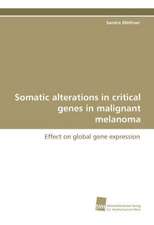The Use of Mass Spectrometry Technology (MALDI-TOF) in Clinical Microbiology
Editat de Fernando Coboen Limba Engleză Paperback – 8 aug 2018
Although the main use of the technology has, until now, been identification or typing of bacteria from a positive culture, applications in the field of virology, mycology, microbacteriology and resistances are opening up new opportunities.
- Presents updated applications of MALDI-TOF techniques in clinical microbiology
- Describes the use of mass spectrometry in the lab, the principles of the technology, preparation of samples, device calibration and maintenance, treatment of microorganisms, and quality control
- Presents key information for researchers, including possible uses of the technology, differences between devices, how to interpret results, and future applications
- Covers the topic in a systematic and comprehensive manner that is useful to both clinicians and researchers
Preț: 560.19 lei
Preț vechi: 733.16 lei
-24% Nou
Puncte Express: 840
Preț estimativ în valută:
107.19€ • 112.22$ • 88.69£
107.19€ • 112.22$ • 88.69£
Carte tipărită la comandă
Livrare economică 31 martie-14 aprilie
Preluare comenzi: 021 569.72.76
Specificații
ISBN-13: 9780128144510
ISBN-10: 0128144513
Pagini: 298
Dimensiuni: 152 x 229 x 18 mm
Greutate: 0.4 kg
Editura: ELSEVIER SCIENCE
ISBN-10: 0128144513
Pagini: 298
Dimensiuni: 152 x 229 x 18 mm
Greutate: 0.4 kg
Editura: ELSEVIER SCIENCE
Public țintă
Microbiologists, infectologists, laboratory technicians, postgraduate and postdoctoral researchers.Cuprins
1. Proteomics: technology and applications
2. Basis on mass spectrometry. Technical variants
3. MALDI-TOF commercial platforms for microbial identification
4. Work procedures in MALDI-TOF technology
5. Indications, interpretation of results, advantages, disadvantages and limitations of MALDI-TOF
6. Quality control in MALDI-TOF techniques
7. Application of MALDI-TOF for bacterial identification
8. Detection of bacterial resistance through MALDI-TOF technology
9. Direct identification of pathogens from positive blood cultures by MALDI-TOF technology
10. Use of MALDI-TOF techniques in the diagnosis of urinary tract pathogens
11. Direct application of MALDI-TOF mass spectrometry to cerebrospinal fluid for pathogen identification
12. Application of MALDI-TOF in clinical virology
13. Use of MALDI-TOF mass spectrometry in microbacterial diagnosis
14. Use of MALDI-TOF mass spectrometry in fungal diagnosis
15. Application of MALDI-TOF in bacterial strain typing and taxonomy
16. Future applications of MALDI-TOF mass spectrometry in clinical microbiology
2. Basis on mass spectrometry. Technical variants
3. MALDI-TOF commercial platforms for microbial identification
4. Work procedures in MALDI-TOF technology
5. Indications, interpretation of results, advantages, disadvantages and limitations of MALDI-TOF
6. Quality control in MALDI-TOF techniques
7. Application of MALDI-TOF for bacterial identification
8. Detection of bacterial resistance through MALDI-TOF technology
9. Direct identification of pathogens from positive blood cultures by MALDI-TOF technology
10. Use of MALDI-TOF techniques in the diagnosis of urinary tract pathogens
11. Direct application of MALDI-TOF mass spectrometry to cerebrospinal fluid for pathogen identification
12. Application of MALDI-TOF in clinical virology
13. Use of MALDI-TOF mass spectrometry in microbacterial diagnosis
14. Use of MALDI-TOF mass spectrometry in fungal diagnosis
15. Application of MALDI-TOF in bacterial strain typing and taxonomy
16. Future applications of MALDI-TOF mass spectrometry in clinical microbiology

















